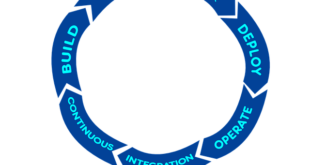Enterprise leaders in today’s competitive business environment strive to bridge the gap between development and operations. Various steps are taken at different organizational levels to reduce the product delivery time while maintaining quality with the least human interaction. The strategy is called DevOps, which combines development with operations to shorten the SDLC and ensure continuous delivery. However, even DevOps services cannot deliver the desired results until security vulnerabilities are mitigated in the development cycle. Hence, a new term DevSecOps is devised that combines processes, individuals, and technologies to make development teams accountable for security.
Here are some ways companies can embed security into the DevOps lifecycle.
Scanning Regularly
DevSecOps can never be successfully implemented without identifying vulnerabilities at the beginning of the software delivery pipeline. Hence, performing security tests is essential before the code is written and take timely measures to fill the flaws.
For this purpose, integrate security tools to scan code as it is written. Keep security scanning throughout the development process and scan your application release candidates before deployment. At the same time, once the code is in production, continuous security monitoring and auditing can produce high-quality software.
Automation
Being one of the founding principles of DevOps, automation plays a key role in implementing DevSecOps practices. Besides making processes more efficient, faster, and reliable, automation improves collaboration between developers, SQA engineers, and security analysts.
On the other hand, companies cannot pull DevSecOps at scale in practice without automated workflows. Hence, it is necessary to automate security auditing, scanning, and testing practices with different security tools for the effective implementation of DevSecOps.
Code Securely
Unfortunately, developers can’t identify all security errors in their code during the SPDL. Timely identification of possible security errors and bugs is necessary to maintain software quality and deliver the final product on time.
To mitigate this issue, source code must be reviewed while being uploaded into the DevOps pipeline. This will help developers identify potential code weaknesses that could make the code susceptible to exploitation. Companies can also identify insecure code by using static application security testing (SAST) solutions, which automate the scanning and reporting of known errors and provide fast feedback to developers. Similarly, strong access-control mechanisms should be used by managing passwords and keys to protect the systems from being hacked.
Multi-layered Security Testing
Next-generation cloud-based systems like containers and microservices are critical for the deployment of DevOps practices. Applications secured with DevSecOps are run in a scale-out, multilayered cloud-based environment comprising host operating systems, orchestration tooling, physical hardware, and container registries & runtimes.
Hence, multiple security tools and workflows should be used to secure all these layers. You cannot ensure security by simply scanning your application code due to the presence of flaws in the host operating, system, orchestration tooling, or even physical hardware that need to be detected.
Continuous Security Monitoring
Three techniques that helps organizations protect their deployed applications from attacks: Web application firewalls, RASP, and containerization. These solutions also enable developers to identify and respond to successful attacks in real-time, reduce the application attack surface, and increase the efficiency of existing security controls.
Use these three techniques while implementing DevOps practices to protect networks and minimize the impact on the speed of development activities.
The Takeaway
DevOps practices help IT companies streamline their development operations and improve the quality of their software. They not only reduce the likelihood of bugs and increase the time to market. At the same time, various risks are also associated with a faster DevOps process.
One of the key challenges DevOps services companies often face is embedding security and protecting systems from external attacks. In this context, this article explained five ways organizations can encourage better security practices. These include regular scanning, automation, continuous security monitoring, secure coding, and multi-layer security testing.
Visit https://khired.com/services/devops/ to get cost-efficiency and full-spectrum DevOps solutions and become an elite DevOps performer.
Also visit:
 Fun Time Tech Let’s have a fun with technology
Fun Time Tech Let’s have a fun with technology



